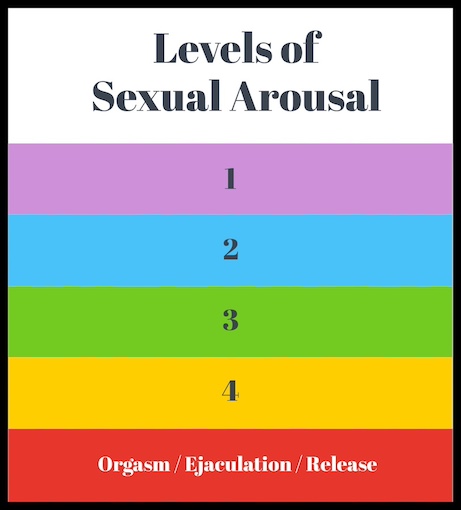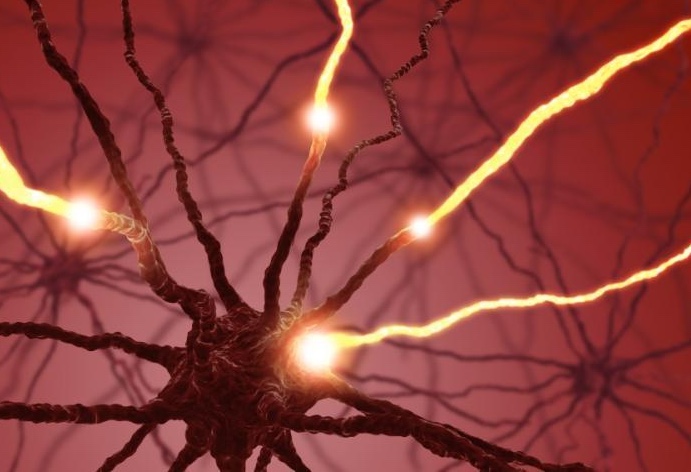A Sexological Bodywork Exploration with Joseph Kramer
Somatic Inquiry 1: Erotic Massage Dancing–Connecting Arousal and Breath
We recommend that you read the Erotic Massage Dancing—Connecting Arousal and Breath Somatic Inquiry in its entirety. Your most important learnings in this section and throughout this course will take place during your practice sessions.
Introduction
All too often, erotic massage involves a bodyworker sexually stimulating a passive receiver. This is not the case in the sex education practice known as Erotic Massage Dancing (EMD) or “active receiving”. In this somatic practice, an erotic bodyworker (an EBodyworker) provides stimulation to a receiver (a Dancer) to help them focus their attention on their own sexual arousal. The Dancer actively brings an awareness to their own sexual arousal through breathing rhythms, simple body movements, sounds and self-touch. The Dancer can then choose to upregulate, downregulate or circulate their arousal. This mindful approach to managing sexual arousal requires a foundation of trust and ongoing communication between the EBodyworker and the Dancer as they decide together the choreography of their session.
Sexual Arousal Management
Sexual arousal management is the foundational skill of sex in all its manifestations (intercourse, oral sex, solo sex, etc). Because management of sexual arousal is best learned and practiced in an aroused state, receiving EMD offers an optimal setting for this somatic learning.
Sexual arousal can be understood as a spectrum, ranging from no arousal to orgasm. Often, the stages of arousal leading to orgasm are overlooked. For individuals practicing EMD, recognizing and naming these stages of arousal can enhance mindfulness about this spectrum. A practical method is to use a 1-to-5 scale. On this scale, level one involves the first stirrings of arousal in the genitals, while level five equates to orgasm or release. Level two indicates a low state of arousal, level three describes significant arousal, and level four a high state of arousal. Each of the first four levels can be maintained and savored for a chosen period of time. This savoring is a form of focused attention and is the basis of the sexual arousal management that happens during EMD.
In EMD, one learns to manage sexual arousal with touch, breath and movement to either increase sexual arousal, decrease sexual arousal or maintain a level of arousal. The increase of sexual arousal, which involves an increase in neural firing, is called up-regulation. Down-regulation names the calming of sexual arousal and a decrease in neural firing.
The EBodyworker stimulates arousal through genital touch. The speed and pressure of erectile tissue stimulation increases or decreases the Dancer’s arousal. Faster touch can increase or decrease arousal. Slower touch can increase or decrease arousal. The Dancer needs to be constantly aware of the rise and fall of sexual arousal within their body, so they can manage that arousal. The Dancer guides the EBodyworker’s touch. The Dancer can also breathe and move faster or slower to upregulate arousal or to downregulate arousal.
Because learning to manage sexual arousal needs to take place in a sexually aroused body, the Dancer cannot lose connection with their arousal. If breathing a certain pace or moving a certain way takes the Dancer away from their arousal, the Dancer should adjust or stop that way of breathing or moving in order to come back into contact with their arousal.
As one begins this body-based practice of EMD, it is important to recognize there are many ways sexual arousal is managed in our lives. Religion and therapy are two of the cultural influences that both support sexual arousal with wise guidance and inhibit sexual arousal through shame and guilt. Products such as porn, drugs and alcohol also upregulate and downregulate our arousal. We are often unconscious of how much these institutions and products influence our sexual arousal. The good news is that erotic mindfulness practices can often be effective at interrupting the physiological results of unwanted conditioning of our sexual arousal. But it’s important for the EBodyworker to recognize when there are psychological and medical influences on sexual arousal that need more than the physiological practices of EMD.
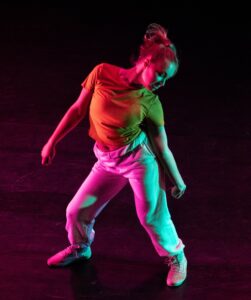
Confronting Sexual Arousal Habits
Managing sexual arousal involves learning new sexual skills while letting go of limiting sexual arousal habits. These sexual arousal habits, often picked up during childhood and adolescence, routinely produce stress and tensions throughout the body. Some of the most common arousal habits involve shallow or constricted breathing, limited body movement, squeezing of thighs, mechanical rubbing of the genitals, stifling of sound, and going away from the body into fantasy or thinking. Although these habits were originally acquired in the pursuit of orgasm, they now limit our potential for pleasure. Habitual sex is most often experienced as boring sex. These arousal patterns inhibit playful and open-hearted sex with our partners and with ourselves.
Our sex drive often triggers a mindless pursuit of orgasm/release. This “wanting” or craving of orgasm/release is a dopamine-driven neurological process that gives rise and endurance to all our other sexual habits. How you touch your genitals, how you breathe during sex, how you squeeze toward release, all of these habits are governed by the “wanting” of orgasm. EMD offers effective ways to disrupt and escape this powerful “wanting orgasm” mode. Rather than grasping or craving for orgasm/release, the Dancer savors sexual arousal and welcomes that arousal into their body. (Brief explanation of “wanting orgasm” by Joseph Kramer.)
Five-Minute Savorings
To confront sexual arousal habits and manage sexual arousal effectively, it is essential to develop focused attention. In EMD, focused attention is cultivated through a practice called “savorings”: five-minute erotic touch segments where the same stroking motion is repeated in sync with controlled, paced breathing. These five-minute savorings can also include repetition of a movement, sound or even self-touch. Typically, a single EMD session includes ten or more savoring segments.
Before beginning a series of five-minute savorings, the EBodyworker and Dancer decide the “menu” of genital strokes, breathing patterns and movements that might be used in the session. If necessary, they practice any genital strokes, breathing patterns and movements they are not familiar with.
Once the five-minute savorings begin, the EBodyworker and Dancer might take turns choosing the strokes, breathing patterns, and movements for that particular savoring. What is most important is that EBodyworker and Dancer repeat the chosen stroke, breath and/or movement without variation for the whole five minutes. This allows for the deepening of attention skills. However, fine-tuning of the chosen stroke is sometimes necessary within the first minute of a savoring segment.
There is a 30-second quiet pause after every savoring touch segment to install the experience, allowing the experience to move from short-term memory to long-term memory. After this pause, the EBodyworker asks the Dancer to speak aloud one sensation or feeling they are aware of. The EBodyworker and Dancer then agree on which genital stroke, breathing pattern (and sometimes movement) are going to happen for the next five minutes.
As they near the end of each savoring, the EBodyworker can say something like,“five more breaths” and begin to slow their touch. Timing each savoring segment is the responsibility of the EBodyworker. Some keep time with a large wall clock, others make use of phone apps (the phone might need to be in a plastic bag). If music is to be used with a savoring, the Dancer should make sure the music supports the rhythm of their breath and movements.
Timing each savoring segment is the responsibility of the EBodyworker. As they near the end of each savoring, the EBodyworker can say something like,“five more breaths” and begin to slow their touch.
When first teaching the Savorings practice, five minutes might be too long for the Dancer to maintain focus. The EBodyworker might also have difficulty repeating a stroke for five minutes because of hand strength. Two minutes might be a good length when learning the Savoring stroke. The Dancer and EBodyworker can work their way up to five minutes over time.
At the end of each EMD session, the EBodyworker and Dancer might decide upon homework practices for the Dancer (and their partners). The EBodyworker and Dancer can also discuss possible directions to be explored in the next EMD session. The Dancer should commit to at least ten EMD savoring sessions with the EBodyworker to effectively strengthen their ability to focus on sexual arousal. Just as professional musicians owe their success to extensive practice of scales, the same principle of repeated practice applies to the savoring segments in EMD.
(Savorings are based upon a practice developed by Mareen Scholl, a teacher of Sexological Bodywork in Berlin).
Preparations for Erotic Massage Dancing
Improving Your Erotic Touch Skills
The more skilled the EBodyworker is with erotic touch, the better the experience will be for the Dancer. However, even EBodyworkers who do not have a background in massage or erotic touch can effectively use five-minute savoring segments to offer powerful somatic learning to their clients. In fact, the repetitive touch involved in the savorings naturally helps EBodyworkers to improve their massage skills.
Choosing Effective and Pleasurable Savoring Strokes
- Ask your client for guidance. How do they touch themselves?
- Call upon your favorite ways of touching yourself.
- Experiment with genital touches that past partners and lovers have enjoyed.
- Check out erotic massage videos to discover powerful ways of touching.
Savoring Variations
- Some EBodyworkers choose to include one savoring segment in their sessions that involves a variety of strokes and ways of breathing. This variation can create learning for the Dancer by offering a contrast to repetitive touch.
- For one five-minute savoring during a session, the Dancer might be instructed to do the repetitive stroking on themselves.
- Although the EBodyworker can stand next to the table, they can also sit on the table between the Dancer’s legs, which are draped over their legs (as seen in the photo of the two lovers below).
- The intention of the five-minute savorings is to produce pleasure by repeatedly stimulating the nerve endings of the genitals. Pulling a section of skin taut then stroking, allows direct contact with nerve endings. For example, pulling the skin of the penis toward the base allows access to nerve endings that are often folded into the skin.
Educating the “Practice Partner” About Their Role
Working with an actual client is quite different from working with a volunteer practice partner. Actual clients choose what takes place in a session. During your EMD practice sessions, your volunteer’s purpose is to support your learning by taking on the role of the Dancer as explained to them by you. For example, if your practice partner cannot adhere to EMD’s five-minute savoring structure, you will need to get a different practice partner. The role of the volunteer Dancer can be quite demanding, requiring focus and motivation. A Dancer (either an actual client or a volunteer) can request that the touching stop at any time.
Practicing Breathing Patterns
The EBodyworker and Dancer practice a variety of breathing patterns together to guide their erotic journey. Most EMD sessions will involve one or more of the following breathing patterns: circular breathing, double-inhale (or triple-inhale) breathing, diaphragmatic breathing or Resonance Frequency Breathing (RFB). Each of these breathing patterns can be practiced at different speeds (except RFB). The Dancer might share additional ways of breathing they wish to use while practicing EMD.
The recommendation for all breathing patterns is to inhale through the nose and exhale either through the nose or the mouth. The Dancer can inhale through the mouth if that feels better for them. Most of the effort in breathing should take place on the inhale with relaxation on the exhale. To more fully experience the rhythm of their breathing, the Dancer might rest one hand on their belly and move the other hand in rhythm with their breathing.
Both the Dancer and the EBodyworker can become more comfortable with specific breathing patterns and speeds by practicing them as homework, using the recordings below. The Dancer or the EBodyworker can breathe at the recording’s given pace or they can speed up or slow down the recording by clicking next to the play button and choosing a new playback speed.
Avoiding Tetany
Perhaps the most important guidance for erotic massage breathing is “relax on the exhale.” Pushing the exhale causes the participant to breathe out too much carbon dioxide. Their blood becomes more alkaline, which can cause tetany. This condition often feels like being paralyzed, especially around the mouth and in the wrists and hands. If the Dancer starts to feel uncomfortable sensations in their lips from breathing, the EBodyworker can suggest they make a long sound on the exhale of each breath. It is difficult to force the exhale while making a long sound. If their wrists begin to cramp, the Dancer can place their hands flat underneath their hips.
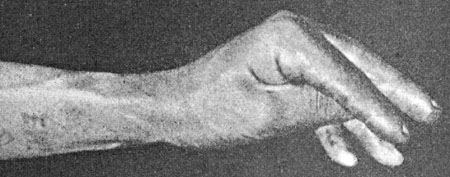
Some forms of fast-paced breathing, like holotropic breathing, make use of tetany. However, tetany usually takes the breather out of their learning zone, out of their window-of-tolerance, even triggering fight-or-flight states. The intention of the breathwork in Erotic Massage Dancing is not to distress the nervous system.
Recommended Breathing Styles
Circular Breathing
In circular breathing (sometimes called Rebirthing Breath or connected breathing), there is no pause at the top or the bottom of the breath. This breath can be used at many speeds, from very slow to very fast. Fast circular breathing integrates well with various levels of sexual arousal and is often used to interrupt a Dancer’s habits of going off into erotic fantasy or self-judgment.
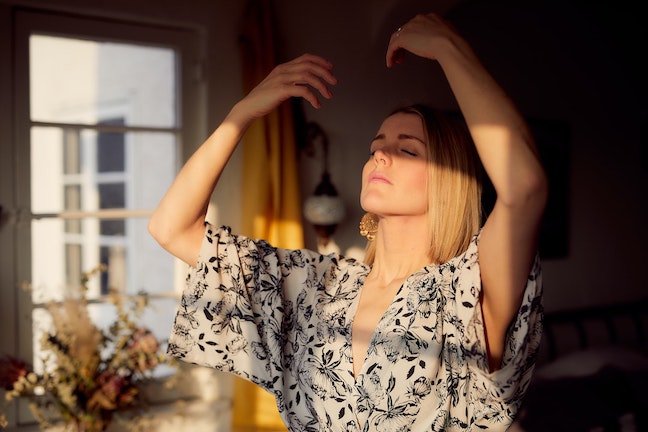
Circular Breathing Recording (5:30 minutes)
You can use this tape for practicing circular breathing at different speeds. Change speed next to the play button on the lower left. Be sure to pay attention to how your body sensations change at different breathing speeds. Get comfortable breathing at the “normal” speed and then notice your body sensations at .75 speed and again at .50 speed.
Circular Breathing Recording: Wim Hof Breathing (11 minutes)
In this video, Wim Hof guides three rounds of breathing and breath holds. As of 2023, this video has more than 75 million views. Each round starts with 30 circular breaths followed by a breath hold with empty lungs and then a breath hold with full lungs. The whole practice is interesting but you can use this recording just to practice along with Hof’s circular breathing (at normal speed and at .75). There are more than 50 Wim Hof recordings on Youtube where the rounds start with 30 or more circular breaths.
Diaphragmatic Breathing
Diaphragmatic breathing, also called abdominal breathing, belly breathing or deep breathing, is done by contracting the diaphragm on your inhale. The diaphragm is the muscle located below the lungs (see graphic below). This contraction pushes down on the abdominal cavity, expanding the belly and pushing against the pelvic floor. Diaphragmatic breathing creates a rhythmic movement in the viscera. From the top of the lungs to the pelvic floor, our body’s internal organs glide smoothly against each other during breathing.
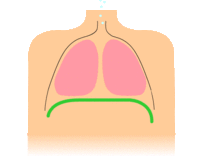
Too little movement in one’s life can result in fascial adhesions impairing the mobility of our internal organs. Diaphragmatic breathing can help alleviate adhesions and restore fluid organ movement. This enhanced mobility within the viscera allows sexual arousal to move more freely within the torso.
Practicing while watching this video can increase awareness of your inner landscape. You are welcome to increase or decrease the speed of the breathing in the lower left-hand corner. The diaphragm moving down causes the inhale. Try practicing diaphragmatic breathing with one hand on the belly and move the other hand in rhythm with the breath.
Double/Triple-Inhale Breathing
The inhale of double-inhale breathing has two segments separated by a pause. Inhale through the nose, pause, then fully inhale, then exhale through the nose or the mouth. Double- and triple-inhale breathing helps you fill your lungs to more than 90% capacity.
Double-Inhale Breathing Recording: Double-Inhale Breathing
You can make adjustments to the pace of this recording next to the play button on the lower left. You can also practice triple-inhale breathing with this same tape. Inhale on the first three beats, exhale on the fourth beat.
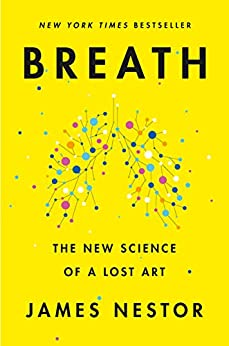
Resonance Frequency Breathing
Humans normally breathe between twelve and twenty breaths per minute. Resonance Frequency Breathing is much slower—about 5.5 breaths per minute. This breath is sometimes called Resonance Breathing, Coherent Breathing, or HRV Breathing. James Nester, in his groundbreaking book Breath: A New Science of a Lost Art, claims that breathing at Resonance Frequency is perhaps the healthiest pace we humans can breathe. He ends his entertaining research on a dozen popular breathing techniques with this bold statement:
For all my travels and travails, there is one lesson, one equation that I feel is at the root of so much health, happiness and longevity…The perfect breath is this: breathe in for about 5.5 seconds, then exhale for 5.5 seconds. That’s 5.5 breaths a minute, for a total of about 5.5 liters of air. (p.212)
Resonance Frequency Breathing gets its name because it brings into resonance our respiratory system, the rhythm of our heart beat, our circulatory system and the sympathetic and parasympathetic/vagal branches of our nervous system. This breathing at 5.5 breaths per minute helps all of these systems to function more efficiently and synergistically, promoting an incredible integration within our body. By breathing this pace while practicing Erotic Massage Dancing, we are integrating our sexual arousal into all of these systems as they pulsate together with aliveness.
Resonance Frequency Breathing (20-minute audio)
Resonance Frequency Breathing (10-minute audio)
Resonance Frequency Breathing (5-minute audio)
These music recordings which go up the scale for eight counts (inhale) and down for eight counts (exhale) are helpful for individuals learning the resonance rhythm. The Dancer or the EBodyworker can breathe at the recording’s given pace or they can speed up or slow down the recording by clicking next to the play button and choosing a new playback speed. (Each individual’s optimal pace for Resonance Frequency Breathing can slightly vary). These recordings, made available to promote public well-being by Kaiser Hospital in San Diego, can be downloaded to your phone where you can also adjust the speed. Here is a 4.5 breaths per minute version of the same Kaiser recording on Youtube.
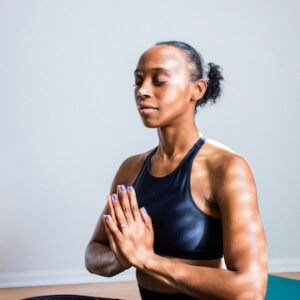
Resonance Frequency Breathing at normal and double speed is especially recommended for the Moving Your Pelvis Like Elvis practice in The Dance of Connecting Arousal, Breath and Movement section below.
Ten minutes of Resonance Frequency Breathing can be miraculous for calming distress and anxiety. Joseph Kramer begins every Zoom class and most private coaching sessions with five minutes of Resonance Frequency Breathing. This breath brings us to a calm yet alert state. You will find helpful guidelines for practicing Resonance Frequency Breathing and using it with clients along with additional recommended audio and video recordings here.
The Big Draw
The Big Draw is traditionally at the end of a Taoist Erotic Massage. The technique involves the receiver holding their breath while clenching the muscles of their body. This offers an orgasmic experience different from traditional orgasm or ejaculation.
In an EMD practice session, the Big Draw can be used to end the last five-minute savoring. As the genital stimulation and fast breathing end, the Dancer inhales deeply and then holds the breath while clenching the musculature of their body, especially their pelvic and gluteal muscles. Slightly lifting the head and feet helps with this tightening of the muscles. After constricting the muscles and holding the breath for twenty seconds, the Dancer lets go and relaxes, savoring the sensations that arise. After the Big Draw, the EBodyworker steps away, allowing the Dancer to just be. If the EBodyworker has been on the table, they should stop touching the Dancer and get off of the table before the Dancer begins the Big Draw.
It is quite common after the Big Draw for Dancers to have visionary, spiritual or religious experiences. A feeling of Oneness with everything is quite common. Some individuals connect with intimates and relatives no longer in the world. Often there is clarity about important decisions. These and other somatic openings make the Big Draw a valuable practice. After the Big Draw, both EBodyworker and Dancer should take extra time to notice and savor their inner landscape. The Dancer can then speak about their Big Draw experience.
Big Draw Video Demonstrations
(None of these videos demonstrates a Big Draw at the end of a five-minute savoring).
Video length: 2:36 minutes. Caffyn Jesse writes, “This practice uses breath and muscles to change states of consciousness rather quickly. The tensions between inhalation and exhalation of breath, and between clenching and releasing of muscles give rise to new neurological possibilities. This video demonstrates one of the many ways of doing the Big Draw. My breathing pattern here is two sniffs in and then relaxing.”
Video length: 2:40 minutes. Instead of clenching, Caffyn Jesse demonstrates a whole-body stretch.
Video Length: 2 minutes. Sexological Bodyworkers Deej Juventin and Martha Lee offer practical guidance on four kinds of breathing in this Youtube video. You will find the Big Draw demonstration at the 3:30 mark.
The Power and the Glory of Taoist Erotic Massage
by Joseph Kramer
In the early 1980s, I developed and taught Taoist Erotic Massage (TEM) to queer men as a safe sex response to AIDS. Sexological Bodywork was created in 2003 to spread far and wide the communal erotic joy and other benefits of this specific erotic massage.
Let me tell you a bit about Taoist Erotic Massage. TEM sessions always began with a relaxing, full-body massage. The giver then guided the receiver in fast breathing while creatively massaging the genitals with thirty different strokes. The novelty of the touch and the increased oxygen from paced breathing helped the receivers to stay focused on their bodily sensations.
Because HIV could be present in semen, I decided this safe sex practice should not include a “happy ending.” Instead, the massage ended with a Big Draw. The receiver clenched their muscles, held their breath for thirty seconds and then relaxed into a fifteen-minute period of quiet, usually marked by joy, peacefulness, wonder and clarity.
The goal of this massage was to savor pleasurable states of arousal. In the early days of TEM, I was not aware that eliminating orgasm/release would also free the receiver from many of their sexual habits, allowing them to feel sexual arousal in new ways. Habits such as going off into erotic fantasy or self-judgment were ignored as receivers immersed themselves in sustained sexual arousal.
Thanks to my instructional videos with Annie Sprinkle (Fire on the Mountain and Fire in the Valley) and classes worldwide from a multitude of teachers, TEM has been experienced and used by countless lovers, therapists, sex workers, neotantra practitioners, sacred intimates and sex educators.
Over the last 20 years, TEM has evolved into Erotic Massage Dancing. It is still quite common for someone to request a Taoist Erotic Massage from a Sexological Bodyworker.
The Erotic Roots of Sexological Bodywork
In 2020, Joseph Kramer was invited to give the keynote address at The International Congress on Somatic Sexology (45 minutes). In his talk, Joseph describes in detail the profound lessons he learned teaching Taoist Erotic Massage and how this way of touching inspired him to create the new profession of Sexological Bodywork. Sexological Bodyworkers often make use of Taoist Erotic Massage to introduce students to a state of arousal that is free of fantasy, unfinished emotional business, religious dogma, cultural caveats and habitual sexual behaviors. The receiver accesses this erotic-state-beyond-distraction by breathing a faster rebirthing breath in rhythm with the giver while avoiding impulses to chase orgasm or ejaculation.
Reflection Questions
Please reflect on and answer two of the following questions you feel would be of most value for your teaching with others.
- What’s the difference between a traditional erotic massage and Erotic Massage Dancing?
- What are some common habits of sexual arousal? How might you help a client deal with these habits?
- What is the benefit of being able to access and maintain a specific level of sexual arousal?
- How would you caution a student about tetany before a guided breathing session?
- How can you assist a student to relax from severe tetany?
- Why pause for 30 seconds at the end of each five-minute savoring segment?
- How might witnessing a client masturbate help you to teach them Erotic Massage Dancing?
- How is working with a “practice partner” different from working with an actual client?
- Which breathing style is most challenging for you and why?
- How does a Taoist Erotic Massage differ from Erotic Massage Dancing?
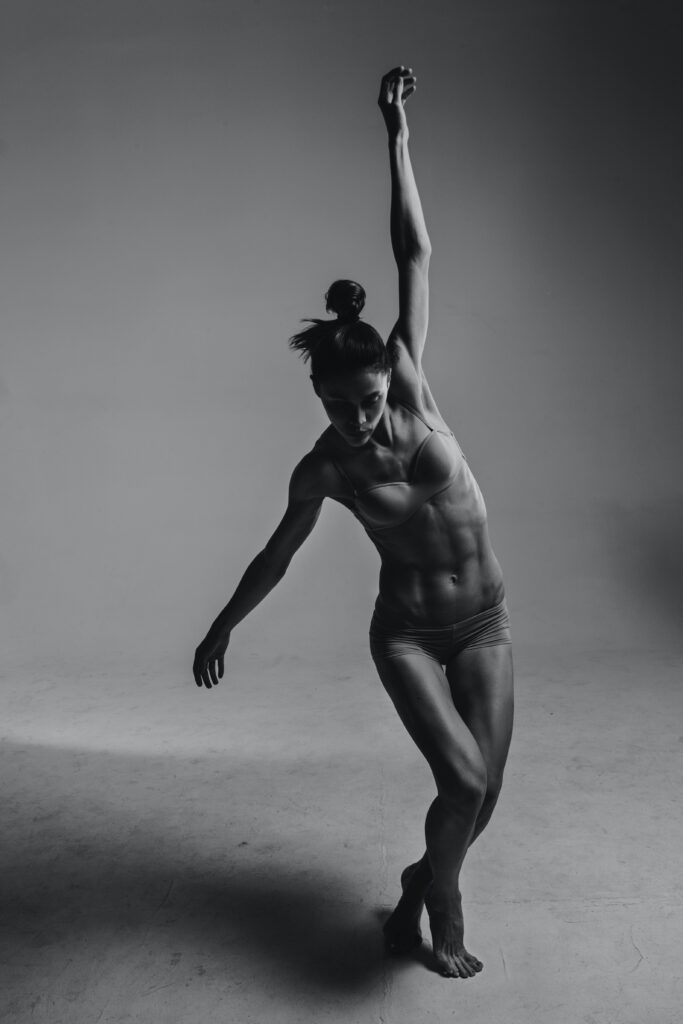
Somatic Exercise 1: The Dance of Connecting Arousal and Breath
Here the EBodyworker helps two different people with different genital configurations to connect their arousal and breath. In both of these sessions, the EBodyworker offers a series of five-minute savorings to help the Dancer focus their attention on connecting two realms: 1) the sensations arising from their genitals being stimulated and 2) the sensations arising from their fast-paced breathing. This practice may involve ten or more five-minute savoring segments. Each savoring segment involves the repetition of one touch and one breathing rhythm with as little variation as possible. (Please review detailed instructions for this practice in the Five-Minute Savorings section above).
Before beginning a series of five-minute savorings, the EBodyworker and Dancer state their intentions and decide the session’s “menu”of the genital strokes and breathing patterns. If necessary, they practice any genital strokes or breathing patterns they are not familiar with. It’s recommended to begin the session with one or more savoring segments of non-genital touch.
The EBodyworker times the session and alerts the Dancer to the end of the savoring segment by slowing down their touch. There is then a 30-second quiet pause to install the experience, followed by the EBodyworker asking, “What are you feeling in this moment?” The Dancer responds, naming a sensation or a feeling. There is very little need for speaking between savorings, except for naming sensations and choosing the next savoring’s touch and breath patterns. This process is repeated again for each savoring segment.
For the next five to eight savoring segments, the EBodyworker slowly repeats one genital stroke over and over while both the EBodyworker and the Dancer breathe together in rhythm with the touch.
At the end of the last savoring segment, the EBodyworker might firmly squeeze the head of the penis or the clitoris through the clitoral hood and, after a minute, slowly release the squeeze and stop touching. An alternative is to do fast breathing for the final savoring segment followed by a Big Draw. (If the EBodyworker has been on the table, they should stop touching the Dancer and slip off of the table before the Dancer begins the Big Draw). After the genital squeeze or the Big Draw of the final savoring segment, both EBodyworker and Dancer should take extra time to notice and savor their inner landscape and install the learning.
At the end of the session, the EBodyworker and Dancer might decide upon homework practices for the Dancer (and their partners). The EBodyworker and Dancer might also discuss any breath or touch experiences that facilitated greater awareness; this is a “somatic opening” that might be explored in homework assignments or in future sessions.
This somatic exercise is NOT about giving or receiving a typical erotic massage. Rather this is a series of five-minute modules where the Dancer learns to regulate their sexual arousal with their breathing. Each five-minute savoring segment involves the repetition of one stroke and one paced breath. Learning to manage sexual arousal happens within these savoring modules precisely because the chosen breath and stroke are repeated without variation for the entire five minutes.
After offering two sessions connecting breathing with arousal, please answer ALL of the following questions in no more than 300 words:
- How many five-minute savorings segments were included in each EMD session? What genital strokes worked best for the Dancer? What breathing rhythms worked best?
- A major intention of this EMD practice is to integrate arousal into our bodies. The Dancer facilitates this integration of arousal by connecting their breath with the feelings in their genitals. What strategies most helped the Dancers you worked with toward this goal? What difficulties did the Dancers experience, if any, in connecting their breath with their arousal?
- What did you learn by repeating a stroke for five minutes? What did the Dancer learn from the repetition of the same stroke for five minutes?
- Did the Dancer have any requests for the next EMD session? What might you do differently in the next session to expand the learning for your Dancer? Tell us about any homework practices that you and the Dancer agreed upon. Why did you choose those practices?
- Please add any other comments or reflections on your savoring sessions that you feel would help others in practicing savorings.
References
Kent Berridge, the main researcher on “liking” and “wanting,” defines these terms and provides links to twenty different studies.
Courtney, Dr. Rosalba. Resonance Frequency Breathing.
Grof, Stanislav & Grof, Christina (2010). Holotropic Breathwork: A New Approach to Self-Exploration and Therapy (SUNY Series in Transpersonal and Humanistic Psychology).
Hanson, Rick (2013). Hardwiring Happiness, Harmony.
Hof, Wim. Breathing Practices.
Hof, Wim. (2020) The Wim Hof Method. Sounds True. 226 pages.
Kaiser Hospital, San Diego. Paced Breathing Practice Videos.
Kramer, Joseph. A Social History of the First Ten Years of Taoist Erotic Massage.
Nestor, James. (2020) Breath: The New Science of a Lost Art. Riverhead Books. 301 pages.
Somatic Inquiry 2: Erotic Massage Dancing—Connecting Arousal, Breath and Movement
We recommend that you read the Erotic Massage Dancing—Connecting Arousal, Breath and Movement Somatic Inquiry in its entirety. There are also substantial benefits in reviewing the Five-Minute Savorings section in Somatic Inquiry 1 before beginning Somatic Exercise 2.
Preparing for EMD with Movement
EMD, like any form of dancing, can involve a variety of movements, from simple to complex. Although the second part of this inquiry offers a dozen different moves for connecting with breath and sexual arousal, the “jiggle” is an excellent starting place because it is so effortless. Learning how to jiggle with arousal and breath is the foundation for exploring more complex movements.
The jiggle involves the Dancer with feet flat on the massage table, playfully rocking their body toward the top of the table and back in rhythm with their breathing.
The Dancer practices jiggling and breathing in a series of preliminary savoring segments—first without arousal. The preliminary practice then involves the Dancer becoming aroused and slowly integrating the jiggle.
The Dancer can experiment with different variations of the jiggle, finding ways of moving that are easy, enjoyable and do not detract from their arousal. Circular breathing—slow or fast—goes well with jiggling. Jiggling can be done with the double-inhale breath, pushing twice with the feet. Jiggling variations might involve rocking the body side to side, pushing with one foot and then the other.
After the Dancer finds two jiggle rhythms that they like, they are ready for an Erotic Massage Dancing session.
Somatic Exercise 2: The Dance of Connecting Arousal, Breath and Movement
Offer The Dance of Arousal, Breath and Movement to two different people with different genital configurations. In each of these sessions, the EBodyworker offers a series of five-minute savorings to help the Dancer focus their attention on three realms: 1) the sensations arising from their genitals being stimulated, 2) the sensations arising from their paced breathing and 3) the sensations arising from jiggling.
This bodywork session may involve ten or more five-minute savoring segments. The intention for these five-minute segments is for the Dancer to connect their breathing and movements with the erotic sensations generated by the EBodyworker’s touch. The Dancer’s attention in each savoring segment is focused on the sensations resulting from breathing, jiggling and being stimulated. The Ebodyworker should touch in rhythm with the Dancer’s jiggling and breathing.
Between segments, there is a 30-second quiet pause to install the experience, followed by the EBodyworker asking, “What are you feeling in this moment?” The Dancer responds, naming a sensation or a feeling. There is very little need for speaking between savorings, except for naming sensations and choosing the next savoring’s touch, breath and movement patterns. This process is repeated again for each savoring segment.
At the end of the last savoring segment, the EBodyworker might firmly squeeze the head of the penis or the clitoris through the clitoral hood and, after a minute, slowly release the squeeze and stop touching. An alternative is to do fast breathing for the final savoring segment followed by a Big Draw. (If the EBodyworker has been on the table, they should stop touching the Dancer and slip off of the table before the Dancer begins the Big Draw). After the genital squeeze or the Big Draw of the final savoring segment, both EBodyworker and Dancer should take extra time to notice and savor their inner landscape.
At the end of the session, the EBodyworker and Dancer might decide upon homework practices for the Dancer (and their partners). The EBodyworker and Dancer might also discuss any breath, movement or touch experiences that facilitated greater awareness; this is a “somatic opening” that might be explored in homework assignments or in future sessions.
After offering two sessions connecting arousal, breath and movement, please answer ALL of the following questions in no more than 300 words:
- How many five-minute savorings segments were included in each EMD session? What genital strokes worked best for the Dancer? What breathing rhythms worked best? What jiggling movements worked best?
- What sensations did the Dancer report feeling from the jiggling, breathing and genital touching? Did the Dancer report any craving for orgasm?
- A major intention of this EMD practice is to integrate arousal into our bodies. The Dancer facilitates this integration of arousal by connecting their movement and breath with the feelings in their genitals. What strategies most helped the Dancers you worked with pay attention to their arousal? What difficulties did the Dancers experience, if any, in connecting their movement and breath with their arousal?
- Did the Dancer have any requests for the next EMD session? What might you do differently in the next session to expand the learning for your Dancer? Tell us about any homework practices that you and the Dancer agreed upon. Why did you choose those practices?
- Please add any other comments or reflections on your arousal, breath and movement sessions that you feel would help others.
More Movements for Integrating Arousal
Moving Your Pelvis Like Elvis
Sexological Bodyworker Frans Trepels teaches Pelvic Rocking – a version of Moving Your Pelvis Like Elvis: “While practicing diaphragmatic breathing, slightly arch your back on the inhale and allow your hips to move forward on the exhale.”
Tantra teacher Julia Tindall says this practice helps thaw frozen pelvises and move sexual pleasure throughout the body. She emphasizes that this practice helps connect the genitals with the heart. In this 4-minute video, she demonstrates a standing version of Moving Your Pelvis Like Elvis. Julia ends her video teaching by saying, “Keep practicing.”
Moving Your Pelvis Like Elvis can be a wonderful preparation for intercourse between people of all sexual orientations and genders. This movement is important for achieving orgasm during intercourse, especially for people with vulvas. Peer-reviewed sex researchers have compared clitoral self-stimulation during sexual intercourse to a version of Moving Your Pelvis Like Elvis during sexual intercourse and found that the Elvis movement was even more effective than clitoral self-stimulation for achieving orgasm.
Masturbation Coach Betty Dodson taught a variation of this movement that she called Rock ‘n Roll Orgasm: Betty writes: “Move your pelvis like Elvis. Roll your hips. Do a little dance lying down. As your hips rock forward and back, the muscles in your body flex and relax similar to an athlete in motion. Dance to the music of your choice with rhythmic pelvic thrusting along with deep breathing and sounds of pleasure. Remember sex is about having fun and feeling good.”
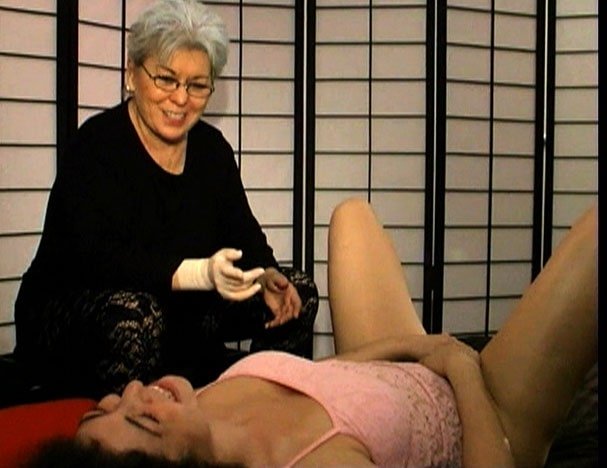
Movement of Hands and Feet
Flex or circle your hands and feet in rhythm with your breathing. The movements can be in your wrists and ankles or in your fingers and toes. Moving your extremities facilitates pulling sexual arousal from your core into all parts of your body.
One Hand
This small movement can be used during all erotic bodywork sessions. On the inhale, the Dancer slightly raises their hand, palm up; on the exhale, palm down.
Further Explorations
Sexological Bodyworker Frans Trepels has been dancing his arousal for many years. In Dance Lessons for Integrating Arousal (5 minutes), he suggests eight somatic possibilities for students practicing Erotic Massage Dancing.
Jiggle. Frans’ version of the jiggle does not include feet flat on a table.
Pelvic Rocking is Frans’ version of Moving Your Pelvis Like Elvis. This full-body rocking is best coordinated with diaphragmatic breathing.
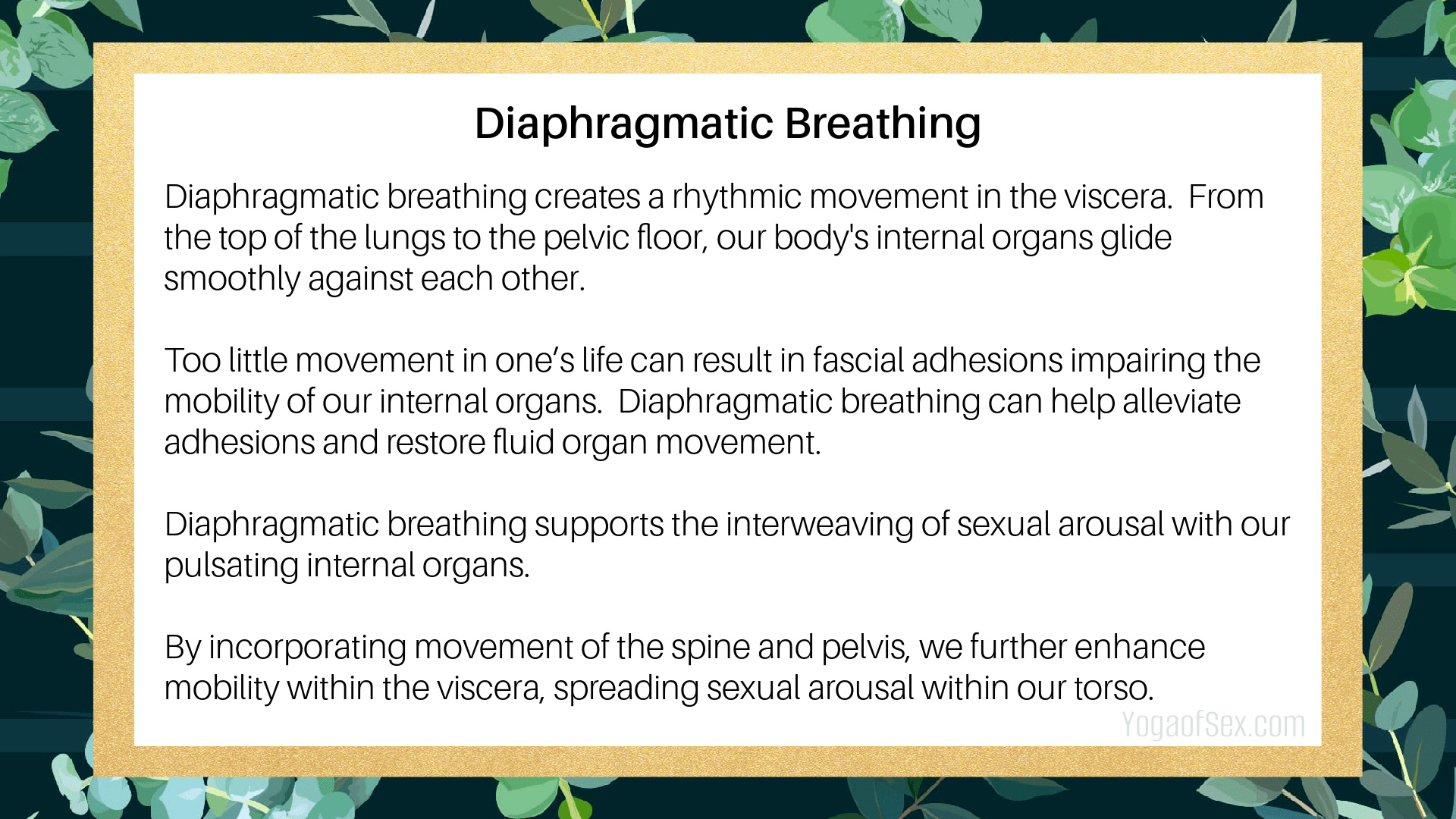
Pelvic Bouncing. In rhythm with your breathing, bounce your pelvis into the mat. You might try moaning with the bouncing as Frans does. Intense Pelvic Bouncing is not recommended if you are on a massage table.
Frans is a yoga instructor who uses the Fire Breath to move sexual arousal throughout his body. This breath can be used in a variety of positions.
Pelvic Muscle Clench. Play with squeezing, clenching or pushing your pelvic floor in rhythm with your breathing.
Twisting. With knees raised and feet flat on the table, move your knees side to side. This can also be done with feet raised off of the table. This movement might be difficult while receiving erotic touch.
Shaking and Kicking. This is a fast way to move sexual arousal around the body. Notice Frans’ emphasis on moving and circling his hands and feet.
Self-Touching. Touch can assist the integration of arousal into all parts of the body.
Keep in mind there are limitless combinations of different breaths and movements, as well as sounds and self-touch, that may be useful in expanding your erotic experience.
Somatic Creativity During Erotic Massage
Although the videos listed below do not demonstrate the five-minute savoring practice, they do show the somatic creativity that can be unleashed by practicing Erotic Massage Dancing.
Involved Receiving (4 minutes). When you receive an erotic massage, do you lie quietly, letting the masseur do most of the work? In the practice of Erotic Massage Dancing, you, the receiver, dance your sexual arousal while on a massage table. You focus attention within your own body while consciously playing with movement, breath, sound and self-touch. You also guide the massage, giving specific instructions throughout to the giver. In this video, we see an individual practicing Erotic Massage Dancing for the first time.
In the next two videos, the receivers demonstrate amazingly creative ways to manage their sexual arousal during an erotic massage.
Anastasia Becomes Her Orgasm (38 minutes). Destin massages his aroused lover Anastasia with patience, passion and expertise. Anastasia knows she is responsible for her own experience. Notice how she dances on the table and guides Destin’s touch. In the end, she relaxes into bliss and integration. This session was a gift that she gave to herself! She knew the benefits of actively receiving an erotic massage. Because the scene was filmed as a love-making session between Destin and Anastasia, Destin is not clothed nor is he wearing gloves.
Hard Cock Dancing (12 minutes). Frans Trepels chooses to actively receive erotic touch from Jordi Oller. Frans uses movement, breath, and sound to integrate the arousal into his body. He also guides Jordi’s touch. During his massage, Frans asks for prostate stimulation, especially along the sides of the prostate. Imagining the prostate as a clock, Frans asks for touch at 4 o’clock and other points along the sides of his prostate. At the end of the session, Frans “cools down” his vibrating body. He tells Jordi that the session could have gone on for hours. This video is an edit from an hour-long Erotic Massage Dancing session.
Erotic Iceman – Breathing for Sustained Sexual Arousal (15 minutes). In The Erotic Iceman, Frans Trepels shares with us his daily practice of playing with arousal. Similar to the practice of Erotic Massage Dancing, he manages his sexual arousal using breath, movement and touch. The pace and rhythm of his breath define the five stages of Frans’ practice. Note that what Frans calls Coherent Breathing is also called Resonance Frequency Breathing. What he calls Wim Hof Breathing is more commonly called Circular Breathing or Rebirthing Breath.
Reflection Questions
Please reflect on and answer two of the following questions you feel would be of most value for your teaching with others.
- Give an example of a “somatic opening” that a student doing Erotic Massage Dancing might experience. How might the student expand the “opening” and make it more permanent?
- When giving an Erotic Massage Dancing session, how would you respond if the receiver stopped consciously breathing and moving?
- How is the repetition of touch, breathing and movement in a five-minute savoring segment beneficial for the Dancer?
- Why is the jiggle a good practice to begin with when integrating movement into your breath and arousal practice?
- How might the Dancer benefit from Moving Their Pelvis Like Elvis?
- How might Erotic Massage Dancing benefit a student who masturbates daily to porn?
References
Annette Bischof-Campbell, Peter Hilpert, Andrea Burri & Karoline Bischof (2019) Body Movement Is Associated With Orgasm During Vaginal Intercourse in Women, The Journal of Sex Research, 56:3, 356-366
Dodson, Betty. Rock ‘n Rock Orgasm Technique.
Hanson, Rick (2013). Hardwiring Happiness, Harmony.
Strozzi-Heckler, Richard (2014). The Art of Somatic Coaching, North Atlantic Books.
Special Sexological Bodyworker Membership Offer from Joseph Kramer
If you and those you love have benefited from the learning in this EMD class, I recommend checking out my sex education videos for beginners and for professionals. Educate your hands and heart with more than 55 hours of erotic touch video instruction at OrgasmicYoga.com and EroticMassage.com. These websites are used to train Sexological Bodyworkers and other erotic professionals–and welcome everyone wishing to learn pleasurable touch.
Click for my special Sexological Bodywork Membership Discount
